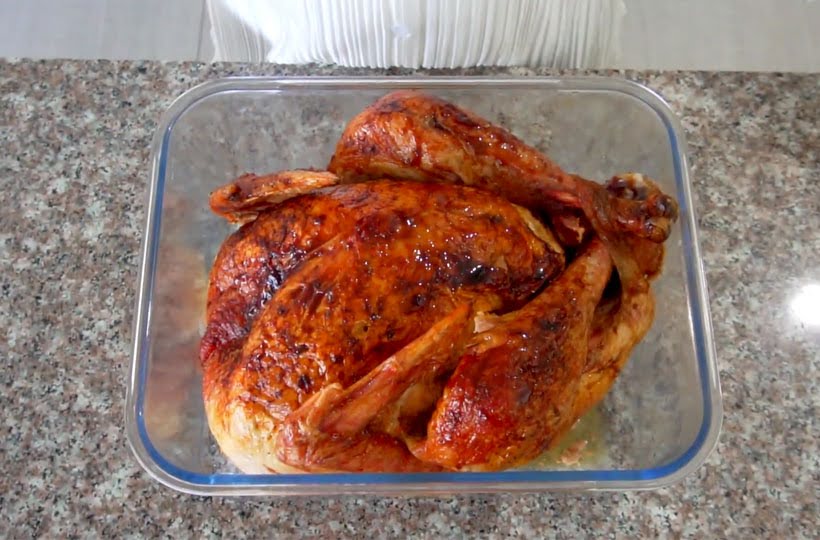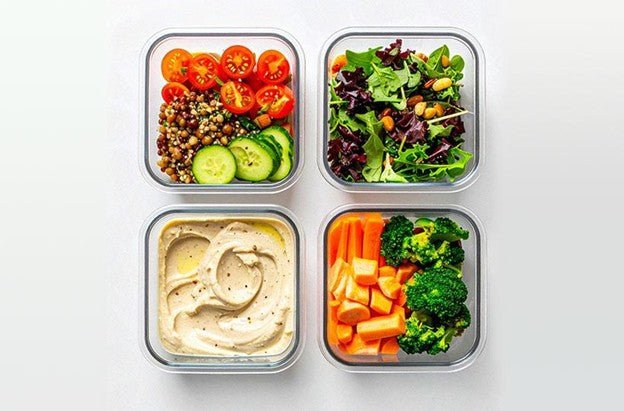Can Stainless Steel Go in the Oven? Everything You Need to Know

The past Relationship of Stainless Steel in the Kitchen
At the start of the 20th century stainless steel quickly gained a lot of popularity for cookware. It turned out to be the best solution due to its signature aesthetic appeal, corrosion resistance and durability appropriate both in cookware and in use for cutlery. Since time immemorial, stainless steel has innovated circumstances to provide what today's chefs require through new technologies and designs.
Why do we need Stainless Steel Cookware?

There are many reasons for feeling the need to have a stainless steel cookware as a significant part of the kitchen:
1. Make Lifespan and Durability a Priority
One of the largest benefits of a stainless steel pan is the long life it can offer. The stainless steel pot can last for decades if suitably taken care of as opposed to non-stick cookware in which the coating will wear out over time. It is an environmentally responsible choice for anybody looking to spend money on durable cookware.
"Stainless steel cookware is built to last. It’s not uncommon to find a stainless steel pan that has been passed down through generations" says Chef Michael Simon, a renowned New York based cooking expert.
2. Be flexible in the kitchen
The good thing about stainless steel cookware is that it is adaptable. It can carry out various cooking procedures, such as frying, sautéing, boiling, and even baking—thus making it one of the most important utensils in a kitchen.
Because stainless steel is resistant to heat and will work on most cooktops, including induction, it has become pretty much a standard material used in most professional kitchens in the United States. Moreover, because of the oven safe characteristic, chefs can go another step further from the stove to the oven without a change of pan.
3. Health Benefits
Stainless steel cookware also has the characteristics of not reacting with food. The issue with other materials is that they tend to react with food when they come in contact with them in a hot state and release potentially harmful chemicals.
"When it comes to healthy cooking stainless steel is a top choice. It’s non-reactive which means you can cook acidic foods like tomato sauce without worrying about any unwanted flavors or toxins" explains Dr. Emily Brown, a nutritionist from California.

What, then, is an oven-safe pan?
As a rule, equipment entirely of metal will be safe to use in the oven. Enamel or ceramic coats will work. Do not let the plastic and wood handles go into the oven unless they say they are safe there. You should always check that they are pans that won't stick.
How to tell if a pan is oven safe?
Below is a list of some of the guidelines if you're looking for how to know if your skillet is oven-safe:
- Follow the instructions provided with your product. Confirm the cookware is oven safe following the manufacturer's instructions.
- Make sure you bear in mind the top temperature. Oven-safe irons and pans are usually good for up to 500 degrees Fahrenheit, however some materials can only take 350 degrees or less.
- Glass and clay items should not be allowed to change temperature fast because they may break when such an action is taken, such as making them move out of a hot oven onto a cold table.
- Look for mixed elements. Certain cookware, like a pan with a wooden handle, is composed of many materials; most of the time, only the metal component will be taken into account for oven-safe.

How One Should Select the Best Stainless Steel Cookware?
While choosing stainless steel cookware, one should take some significant benchmarks into account.
1. Grade of Stainless Steel
Not all stainless steel is the same i.e. though. The grade of this stainless steel means the make-up and quality of it. Most of the common cookware used will have grades of 18/10 and 18/8 which means it includes 18% chromium and either 10% or 8% nickel respectively. These grades offer up to a fantastic resistance to corrosion and rust.
2. The Making
Look for cookware manufactured of layered metals and multi-ply construction; tri-ply is the best with layers of stainless steel with a layer of copper or aluminum. This makes sure the user enjoys even cooking, along with better thermal conductivity.
3. Weight and Balance
The stainless steel workmanship should still be comfortable to handle, even though it is often heavier compared to the nonstick. Depending on the weight and balance, the cookware could either become easy or hard to use. Ensure that you select the pieces that are manageable and strong to feel.

Expert's Tips on Cooking With Stainless Steel.
Cooking with stainless steel takes some time to learn the techniques, but once you have them, you can produce restaurant-quality results in your very own kitchen. Here is how:
- Get your skillet hot
The greatest mistake a person makes with stainless steel cookware is not having it hot enough. The food is not likely to stick to a hot pan, and it generally tends to cook much more evenly. A couple of drops of water on the surface will let you know your pan is ready: once they starts sizzling and evaporating, the pan is complete.
- Take an appropriate amount of oil
Because stainless steel cookware does not have a nonstick coating, the proper amount of oil is applied. Toss in the meal once the food reaches its shimmering oil stage. This gives more flavor to your meal and gives a naturally nonstick surface.
- Be Sure Not to Overfill the Pan
When cooking in stainless steel, do not overfill the pan. Food sticks to the pan and cooks unevenly due to temperature drops caused by crowding. If necessary, cook in batches to ensure each item is getting the attention it needs.

American Stainless-steel Cookware is a Cultural Touchstone
In the United States, stainless steel cookware is much more than an item used in a mere kitchen. Be it a home chef or a TV celebrity chef, this material is ideal for durability and performance.
Did you know?
A metallurgist named Harry Brearley invented the first stainless steel in England in 1913. However it was greatly exploited in the United States from its use in cutlery to the famous cookware that we are used to seeing.
In reality, some of the best brands of stainless steel cookware that are reputed for their quality are actually American, such as All-Clad and Cuisinart. Be it a home chef or expert, these brands have come to mean perfection in the kitchen.
"American kitchens are built on the foundation of stainless steel cookware. It’s a symbol of quality durability and the art of cooking" says Chef Jessica Lynch a culinary instructor at the Culinary Institute of America.
How to Clean Your Stainless Steel Cookware?

Good maintenance is required to ensure the lifetime performance of your stainless steel cookware. Here are some tips:
- Clean with utmost care
Let your pan cool first before washing. Avoid using anything with high surface-scratch capacity. Apply rather a mild detergent and a soft sponge. Mix baking soda and water to form a paste for stubborn stains and then scrub gently on the area.
- Light polish
Regular polishing will help maintain the glossiness of your stainless steel cookware. You can clean it with stainless steel cleaner or with a combination of vinegar and water. It does not only keep your cookware as new but also helps in preventing rust and corrosion.
- Storage
Store your stainless steel utensils in a dry place to prevent rusting due to moisture. If it is possible at all, hang your pans to avoid stacking and any scratch damage.
An Investment for Endless Time

Stainless cookware is an investment in quality and a lifetime investment, not just a kitchen utensil or tool. Stainless offers unrivaled performance — and let us face it, versatility — whether roasting an entrée, cooking a simmering sauce, or sautéing on the stove. It is a must-have for the kitchen because of its long-term attractiveness, health benefits, and durability.
Because Chef Gordon Ramsay once said “Cooking is about passion so it may look slightly temperamental in a way that it’s too assertive to the naked eye. But in stainless steel the elegance is in the substance.”
In a world where kitchen trends come and go, stainless steel cookware is something of a steady companion, ready to meet every culinary duty that may arise with gentle and accurate punctuality.
People Also Ask
Can you place stainless steel cookware in the dishwasher?
Yes, most stainless steel cookware can go in the machine. However, if you want to keep the shiny look and avoid water spots or stains, you should wash it by hand. If you do use the dishwasher, don't use strong soaps and dry the dishes right away to avoid getting water spots.
Why does food sometimes stick to stainless steel pans?
The food can stick to the pan if it is not well heated enough and if there is not enough oil coating the pan. The use of a stainless steel pan takes a bit of technique: the pan should always be preheated after which the oil should be added followed by the food. It heats and forms a natural non-stick surface where the possibility of sticking food is less. Also do not flip the dish very fast. Let it meddle to sear and also form its crust before you flip.
How to clean stainless appliances with burnt food and stains from cookware?
If there is burnt food or stains, fill it with warm water and allow it to soak for several hours or overnight to remove such marks. Scrape the pan after soaking with a soft sponge or cleaning solution that is non-abrasive. For stubborn stains make a paste of baking soda and water and apply it to the affected area with care scrub it off. Another way is to simmer vinegar and water in the pan to loosen the burnt bits and rinse the pan as usual.






Leave a comment